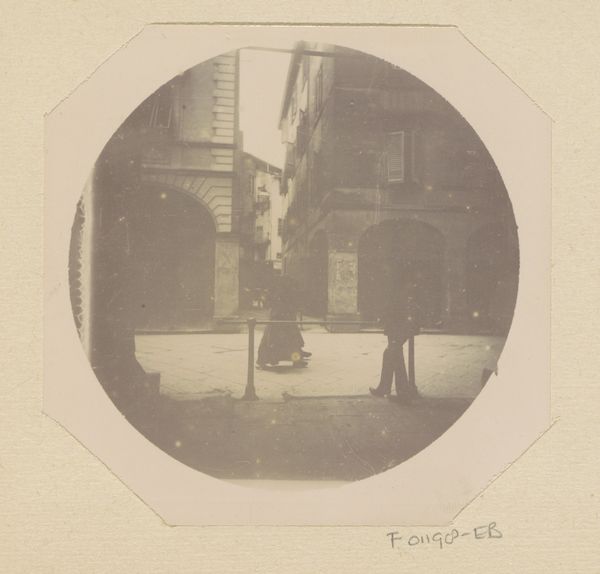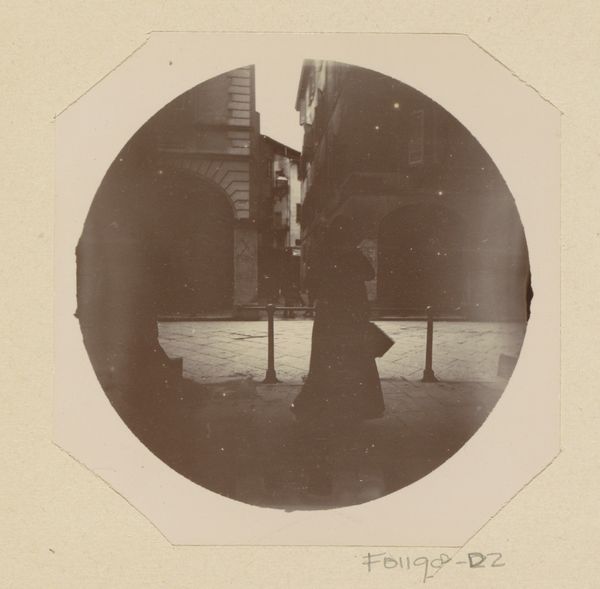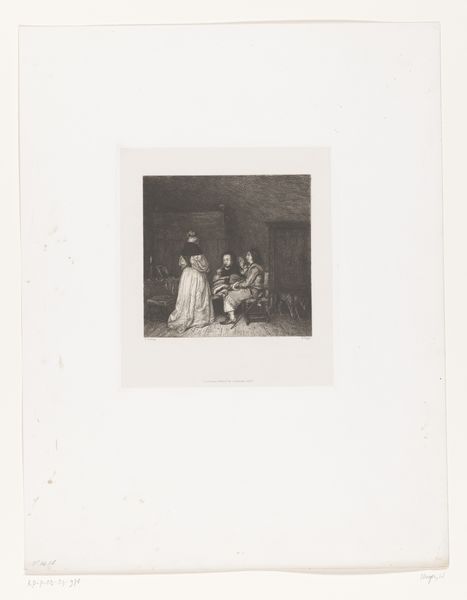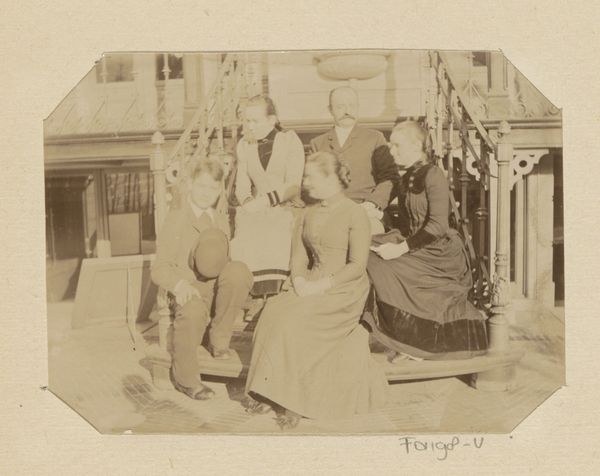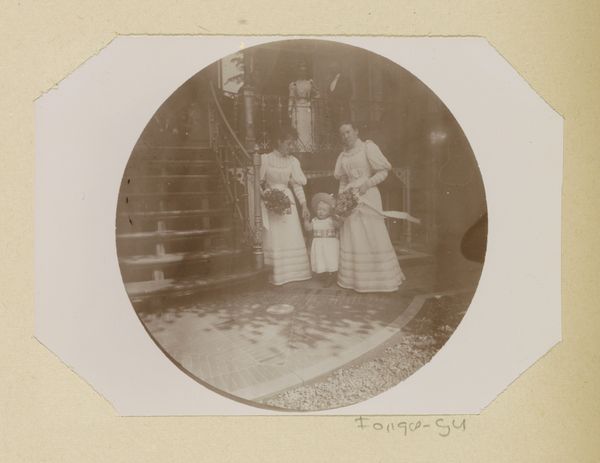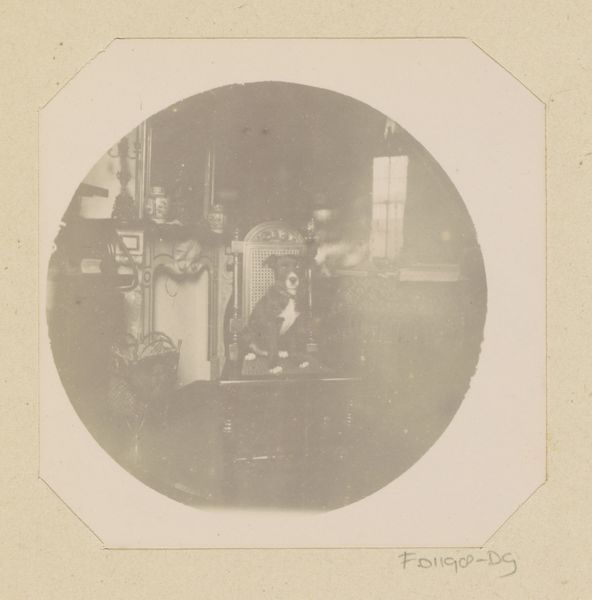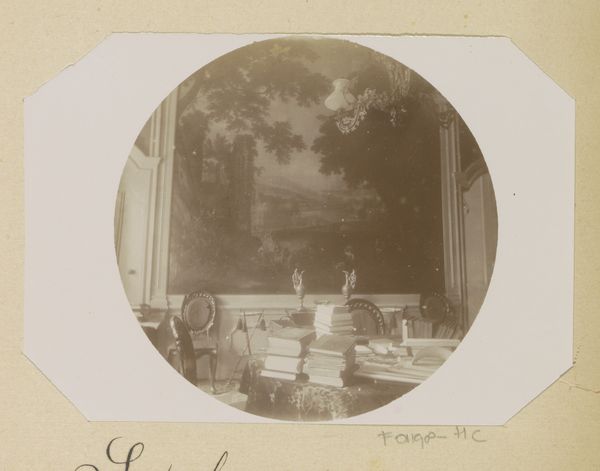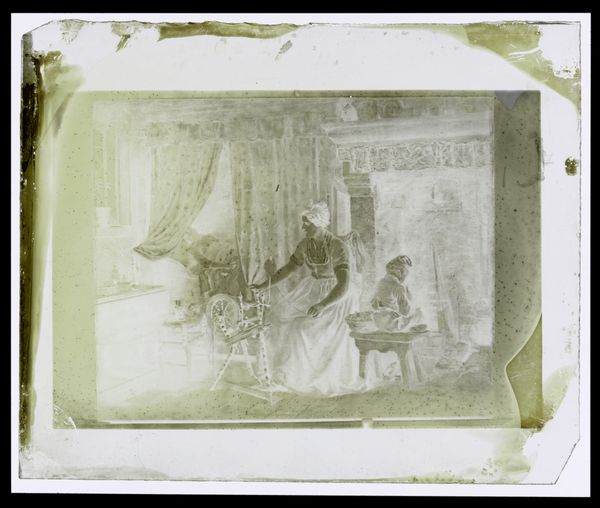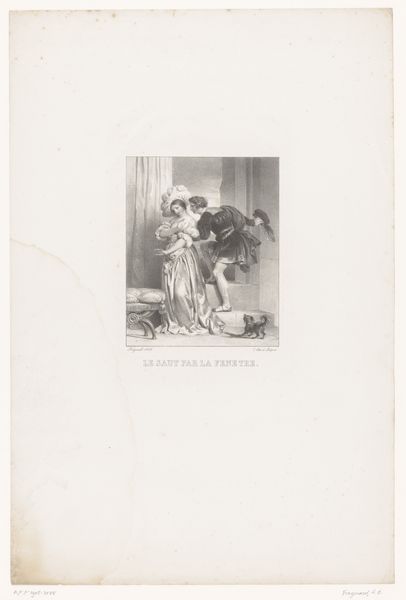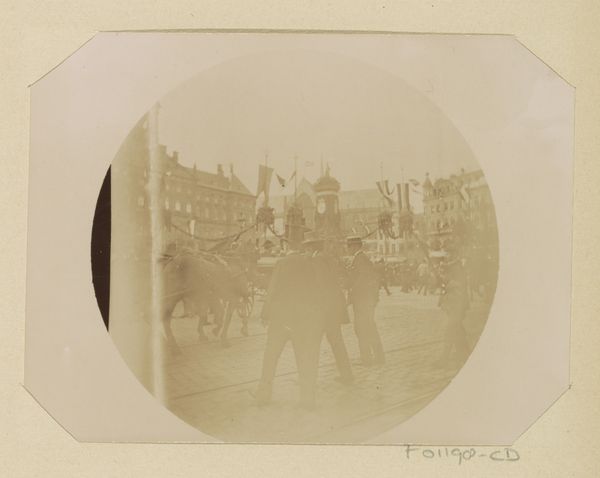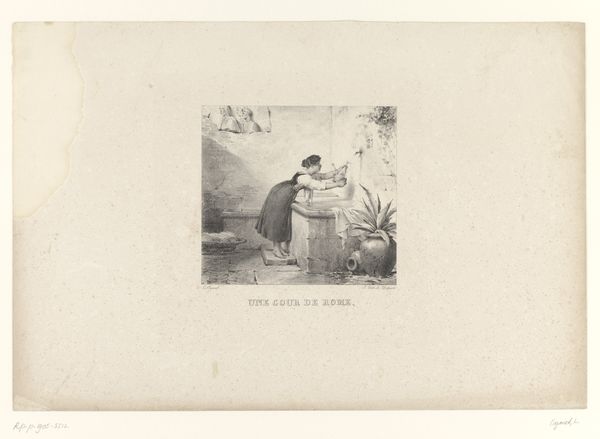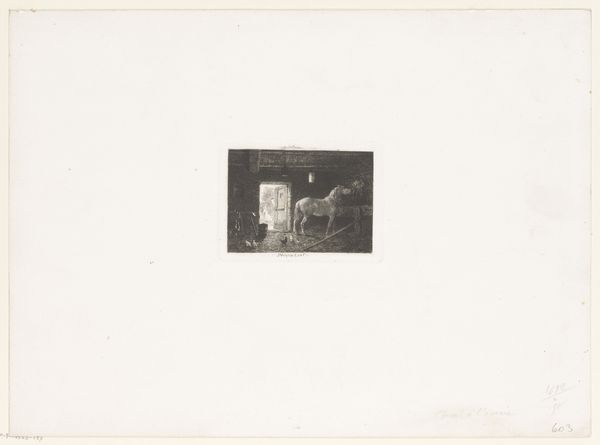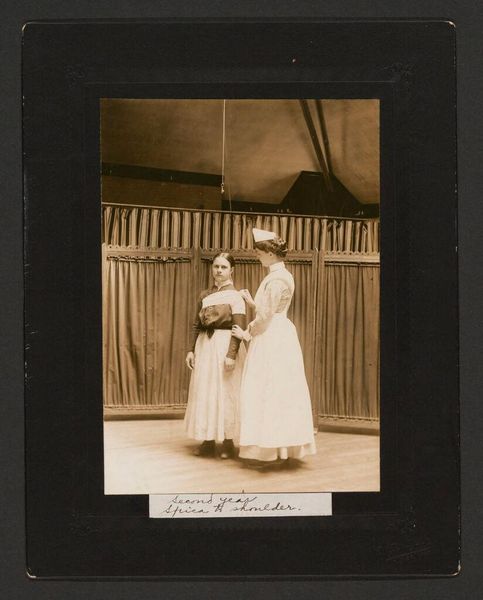
Cato Piek-Asser, staande bovenaan een buitentrap naast haar moeder en een onbekende man tijdens haar bruiloft, onderaan de trap staat Gesiena Piek met een onbekende vrouw en kind Possibly 1893 - 1896
0:00
0:00
print, photography
#
portrait
#
wedding photograph
# print
#
archive photography
#
photography
#
historical photography
#
group-portraits
Dimensions: height 90 mm, width 115 mm
Copyright: Rijks Museum: Open Domain
Editor: Here we have a photographic print from what looks like the 1890s, "Cato Piek-Asser, staande bovenaan een buitentrap naast haar moeder en een onbekende man tijdens haar bruiloft, onderaan de trap staat Gesiena Piek met een onbekende vrouw en kind". It has a slightly faded, ethereal quality. What story do you think the materials and processes tell us? Curator: The materiality of this print points to crucial social factors. Look at the sharp class distinctions evident in the photographic process itself. The time, cost, and skill needed for photography positioned it as a luxury, documenting significant life events like weddings for the upper and middle classes. The print’s physical degradation also speaks volumes – its fading suggests a vulnerability of memory and history, constantly altered by the material conditions of preservation and storage. How does the staging of this photograph speak to labor practices? Editor: I see what you mean. The arrangement feels very posed, artificial. Do you think the stiff formality speaks to the performative aspect of early photography, particularly in relation to social class? Curator: Absolutely. Notice how the family's status is asserted through carefully chosen clothing and location. Consider also the labor involved - the manufacturing of the clothing, the building of the staircase itself, the professional labor of the photographer. Furthermore, consider that photography's chemical processes involved considerable industrial infrastructure. This single image implicates a whole web of material production and human effort. Editor: So, it's not just a snapshot of a wedding, but a record of the society and its means of production, encoded in the print itself. Curator: Precisely. Examining its materiality allows us to see how power relations are inscribed in everyday objects, challenging the illusion of photography as a purely objective medium. What do you take away from understanding photography this way? Editor: It makes me think more about the stories behind the images and the labour involved to produce it and maintain it as an object, challenging my initial assumptions. Curator: Exactly! Materiality reveals complex narratives, making us question not just what we see, but how it came to be seen in the first place.
Comments
No comments
Be the first to comment and join the conversation on the ultimate creative platform.
